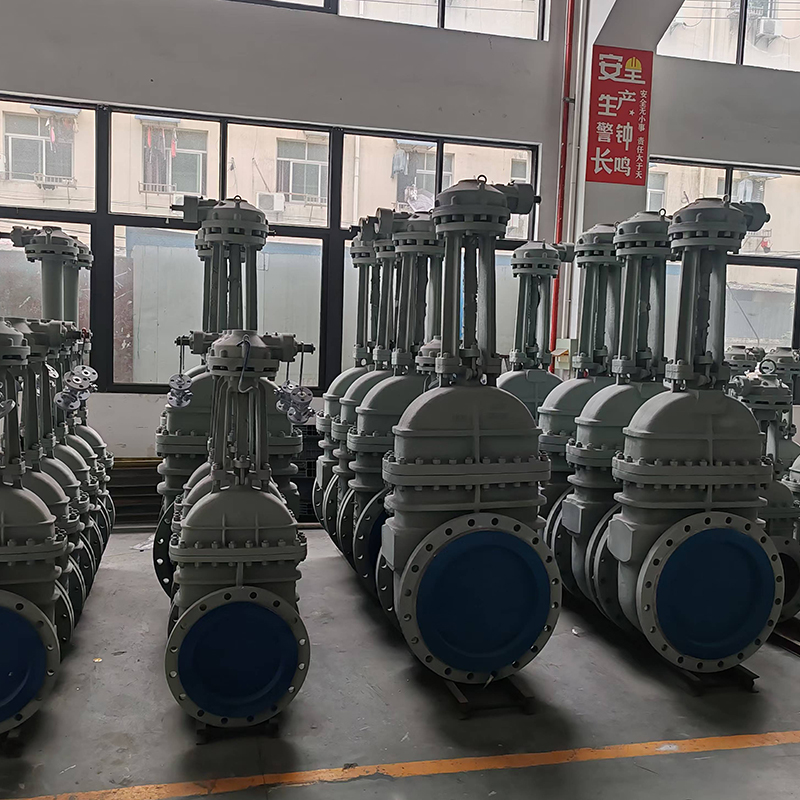
The Air Actuated Gate Valve is designed for automatic operation using pneumatic pressure. It allows for remote control and is suitable for applications that require reliable on/off actuation in pressurized systems. A key performance feature of this valve is its sealing design, which helps prevent leakage during both operation and shutdown.

This valve type typically uses a metal gate that moves vertically to block or open the flow path. To ensure sealing efficiency, manufacturers incorporate several design elements:
Dual sealing surfaces: The valve gate contacts two seat rings, one on either side of the flow path. This provides bi-directional sealing.
Flexible or resilient seats: In many models, elastomer or composite materials are used on the seat faces to enhance sealing performance even under low differential pressure.
Bonnet sealing: The valve stem passes through a bonnet that includes O-rings or gland packing to prevent air or fluid leakage along the actuator stem path.
Spring-return actuators: In some models, air pressure opens or closes the gate, while a spring mechanism ensures sealing when air pressure drops.
These design features make air actuated gate valves suitable for applications such as dust control, slurry systems, and automated water treatment processes. The sealing system's reliability helps reduce fluid loss and enhances operational efficiency.
The Stainless Steel Flanged Gate Valve is a robust solution used in many industries, including chemical processing, water supply, and oil and gas. Its flanged ends allow for secure connections in high-pressure systems, while stainless steel offers corrosion resistance and strength.
Key characteristics include:
Corrosion resistance: Stainless steel, especially grades like 304 and 316, withstands chemical exposure, water, and atmospheric conditions. This is crucial in systems handling corrosive fluids.
Flanged connection: The flanged design (usually conforming to ANSI, DIN, or JIS standards) provides a stable and pressure-rated connection point. It also simplifies maintenance and valve replacement.
Gate operation: The gate inside the valve moves vertically to block or allow flow. This design results in minimal pressure drop when fully open, making it energy efficient for large pipeline systems.
Full port options: Some stainless steel gate valves are full bore, meaning the internal diameter matches the pipeline. This prevents flow restriction and allows for easy pigging (cleaning).
The stainless steel flanged gate valve is typically used where system integrity and fluid purity are priorities. Its material and flange connection type make it well-suited for demanding environments, and it can be installed in both horizontal and vertical pipelines. With proper maintenance, these valves provide reliable service for years in applications requiring strength and corrosion protection.
The Y Pattern Globe Valve is a variant of the standard globe valve, designed with an angled body to reduce pressure drop while maintaining flow control capability. It is a preferred choice in industries such as power generation, chemical processing, and steam systems. One of its key advantages is the range of available sizes and materials, allowing it to be adapted for many service conditions.
Size options:
Y pattern globe valves are available in a wide range, from small diameters (e.g., ½ inch or DN15) to large sizes exceeding 12 inches (DN300+). This allows them to be used in everything from fine flow control in laboratory settings to large-scale industrial pipelines.
Material variations:
Depending on the fluid characteristics and service environment, the valve can be manufactured from various materials, including:
Carbon steel: Suitable for general-purpose water and steam systems.
Stainless steel: Offers resistance to corrosion, making it ideal for aggressive chemicals and clean media.
Alloy steel: Used in high-temperature or high-pressure systems such as power plant steam circuits.
Bronze or brass: Typically used in lower-pressure applications or where cost and ease of machining are factors.
Y pattern globe valves also provide throttling control and are favored in applications where flow regulation and tight shut-off are required. The angled design reduces turbulence and erosion, extending the valve's lifespan while preserving system efficiency.

